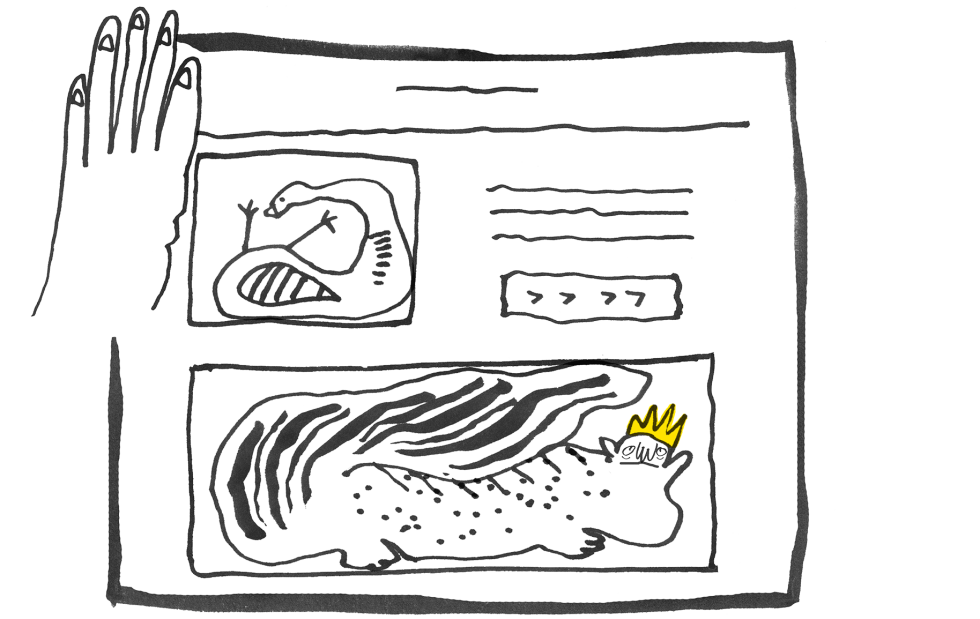If you have more to say about your product than you can fit on the top half of the page, don’t worry. As folks scroll down the page, you can share additional information, including testimonials, videos, a detailed list of features, or anything else you’d like.
Write a compelling product description
One of the most important elements of any product page is a well-written product description that clearly states what you’re selling and why a shopper’s just gotta have it. As with all of your marketing, the copy on your product page should be on-brand and relevant to your audience, but there are a few other things to keep in mind as you write a description of your product.
Be direct
Research has shown that 79% of people tend to scan a webpage instead of fully reading it, so the first description that customers see on your product page should be clear and to the point. Don’t be too salesy or use a bunch of clichés; just provide straightforward information that will help shoppers make their purchasing decision. Remember: you can always include additional details or a longer description later on the page.
Answer questions that shoppers might have about your product
Before making a purchase, shoppers will want to be sure they know exactly what it is they’re buying. While you probably won’t be able to anticipate every possible question that could arise, you will want to make sure that customers have enough information to buy with confidence.
If you’re selling a piece of clothing, for example, tell shoppers what type of fabric it is and how they can expect the item to fit. Or, if you’re selling a piece of furniture, share the dimensions of the item, the materials used, and if it requires assembly once they receive it.
Bring your product to life with images
Customers aren’t able to physically interact with products while they’re shopping online, which means they rely on your pictures to help convince them to buy. In fact, 92% of consumers say that visuals are the top influential factor affecting a purchase decision, so make sure that the imagery on your page conveys texture, size, scent, or any other aspects of your product that might be of interest to your customers.
Multiple images are better than just one
In their 2018 consumer research report, Salsify found that 73% of people want to see 3 or more images when considering a purchase. Fortunately, most smartphones come equipped with great cameras (and built-in editing tools, too), so even if you’re not a photography pro, it’s easy to take as many beautiful, high-quality pictures as you need.
Show different angles
Help your customers visualize what the item looks like in person by using images from different perspectives or proximities. If you’re selling a piece of clothing, for example, customers will want to see what it looks like from different angles while being worn.
As you plan your photos, be sure to include at least one “in scale” image, too; 42% of people will try to determine the size and scale from the images on a product page.
Use lifestyle images
Lifestyle images are a great way to tell the story of your product—and to help your customers imagine how they might use it in their everyday lives.
Incorporate locations, props, and people that will give your audience more context about the thing you’re selling. For instance, if you sell swimwear, consider visiting the nearest pool (or beach) to take some photos. Or, if you’re a coffee roaster, you could round up a few friends and photograph them enjoying a cup of your newest blend—with the bag of beans prominently featured, of course.
Need a few more tips about lifestyle photography? Check out these helpful resources from Shopify, Jungle Scout, and Threadless.





